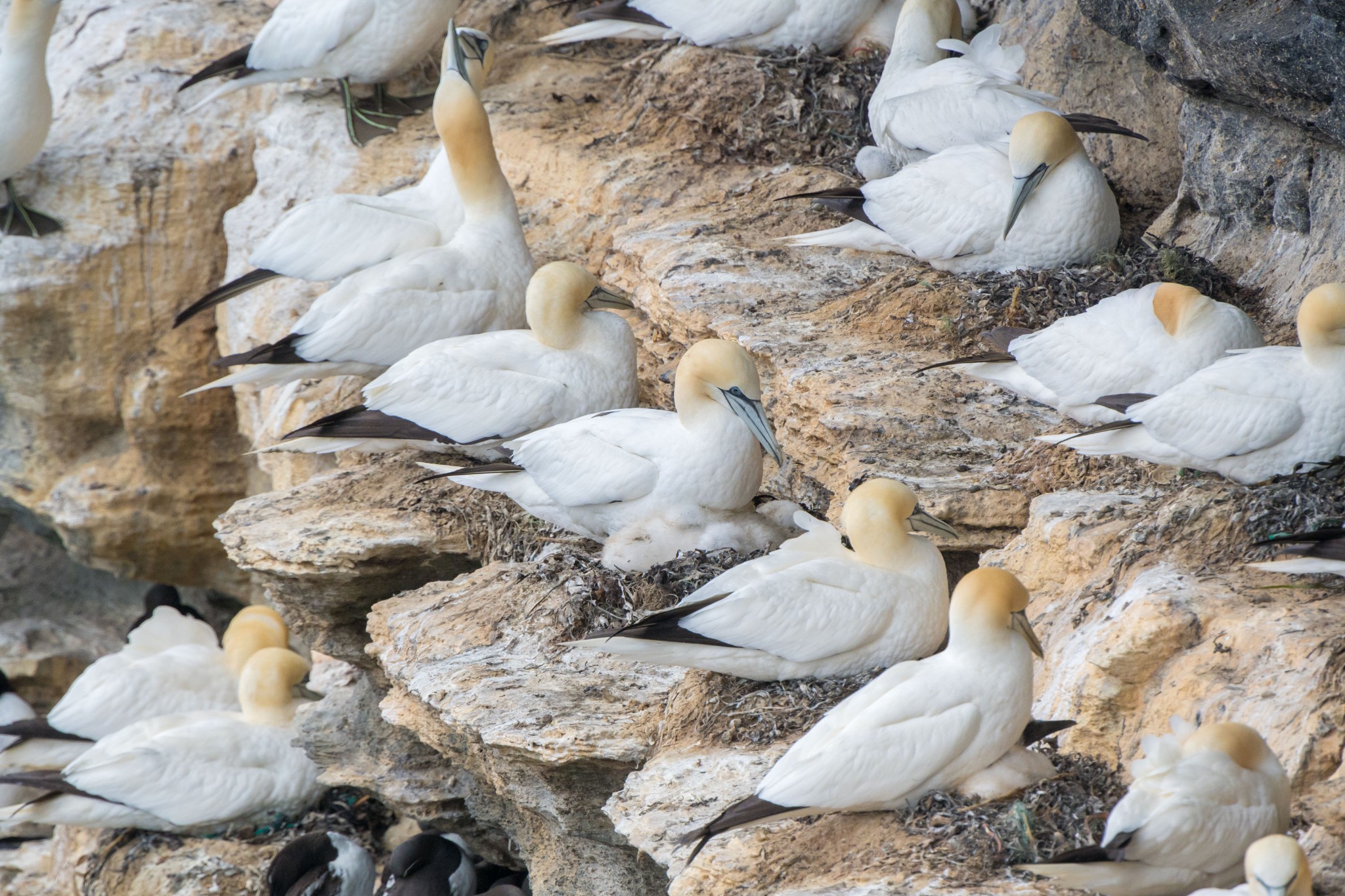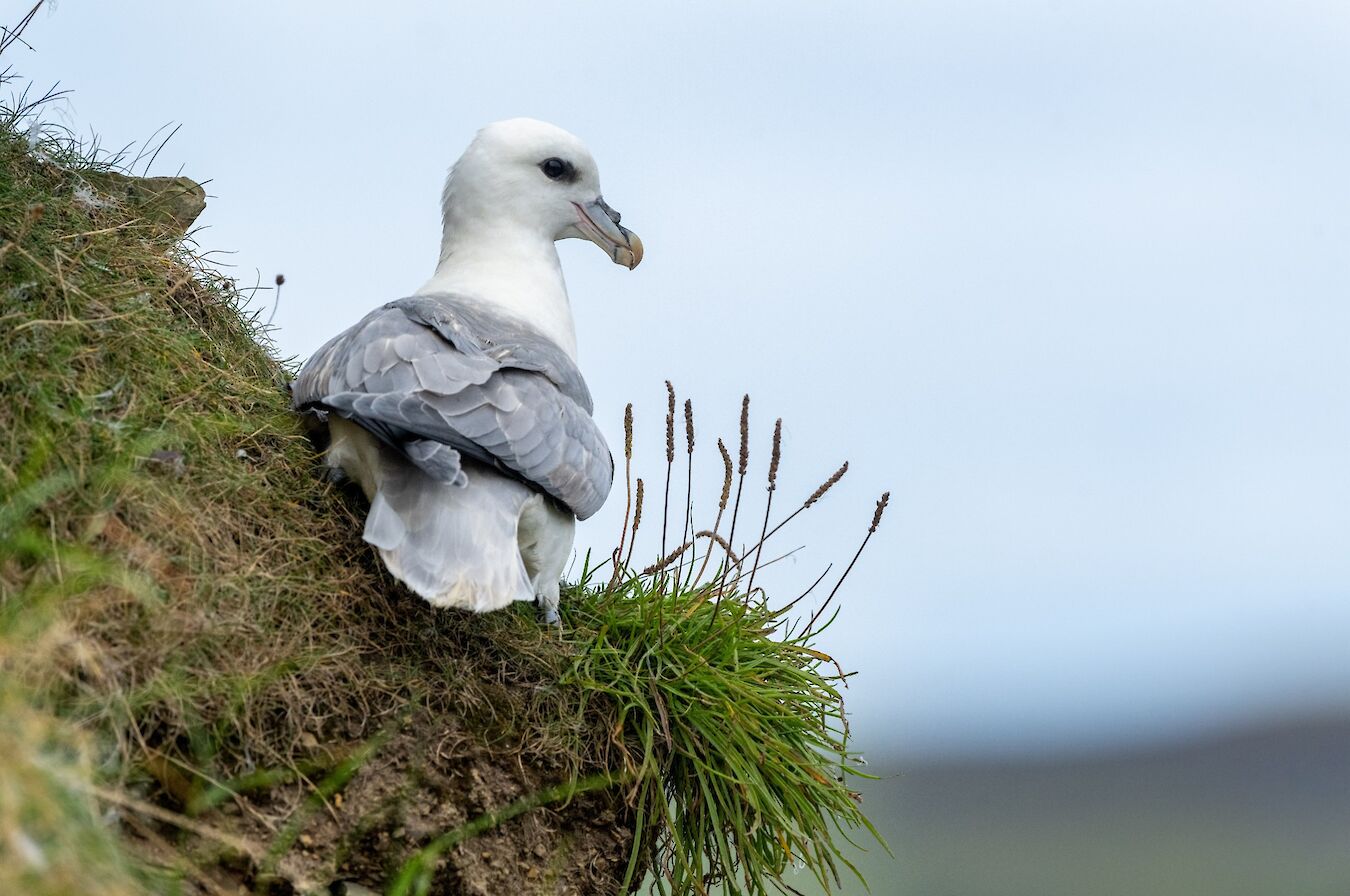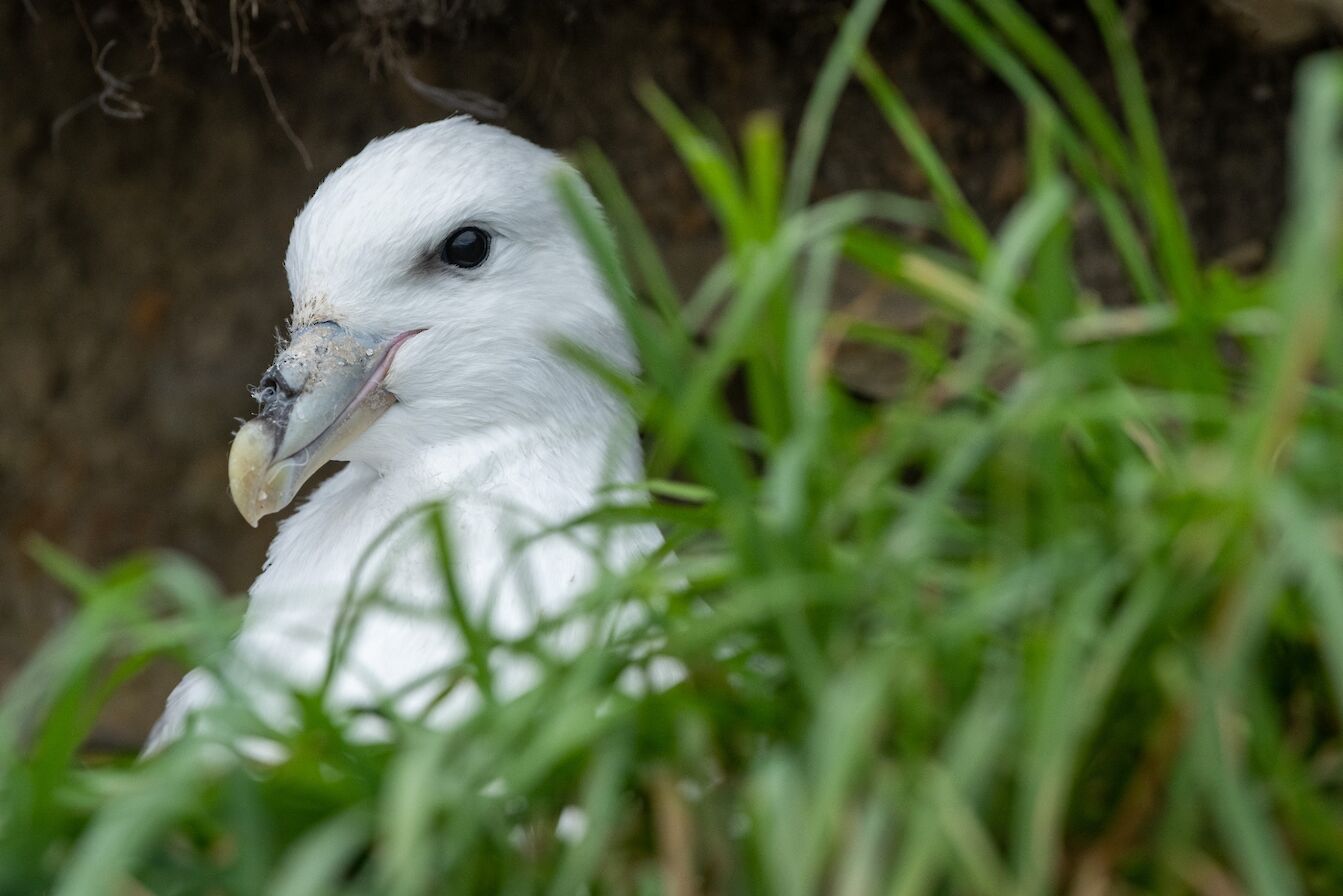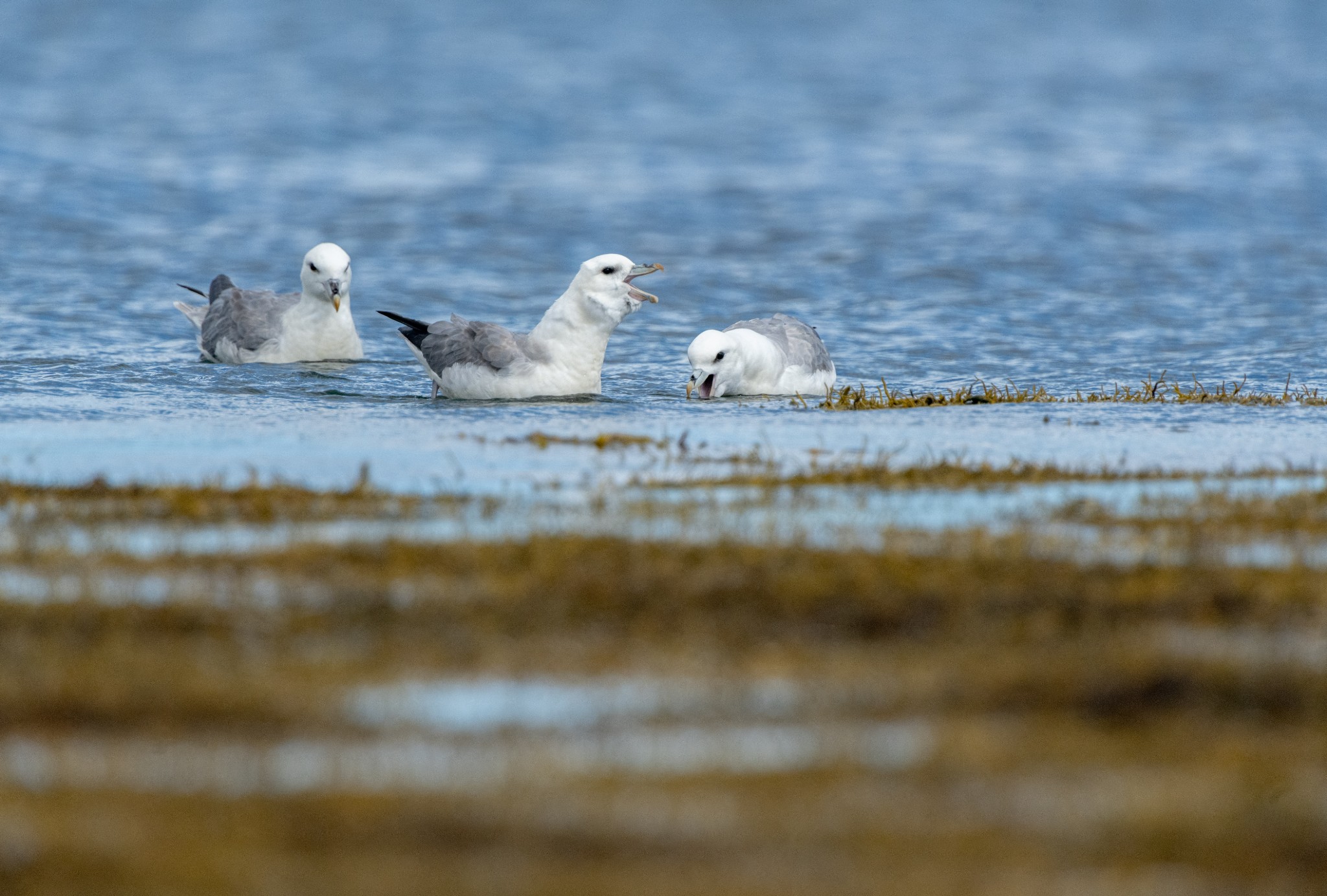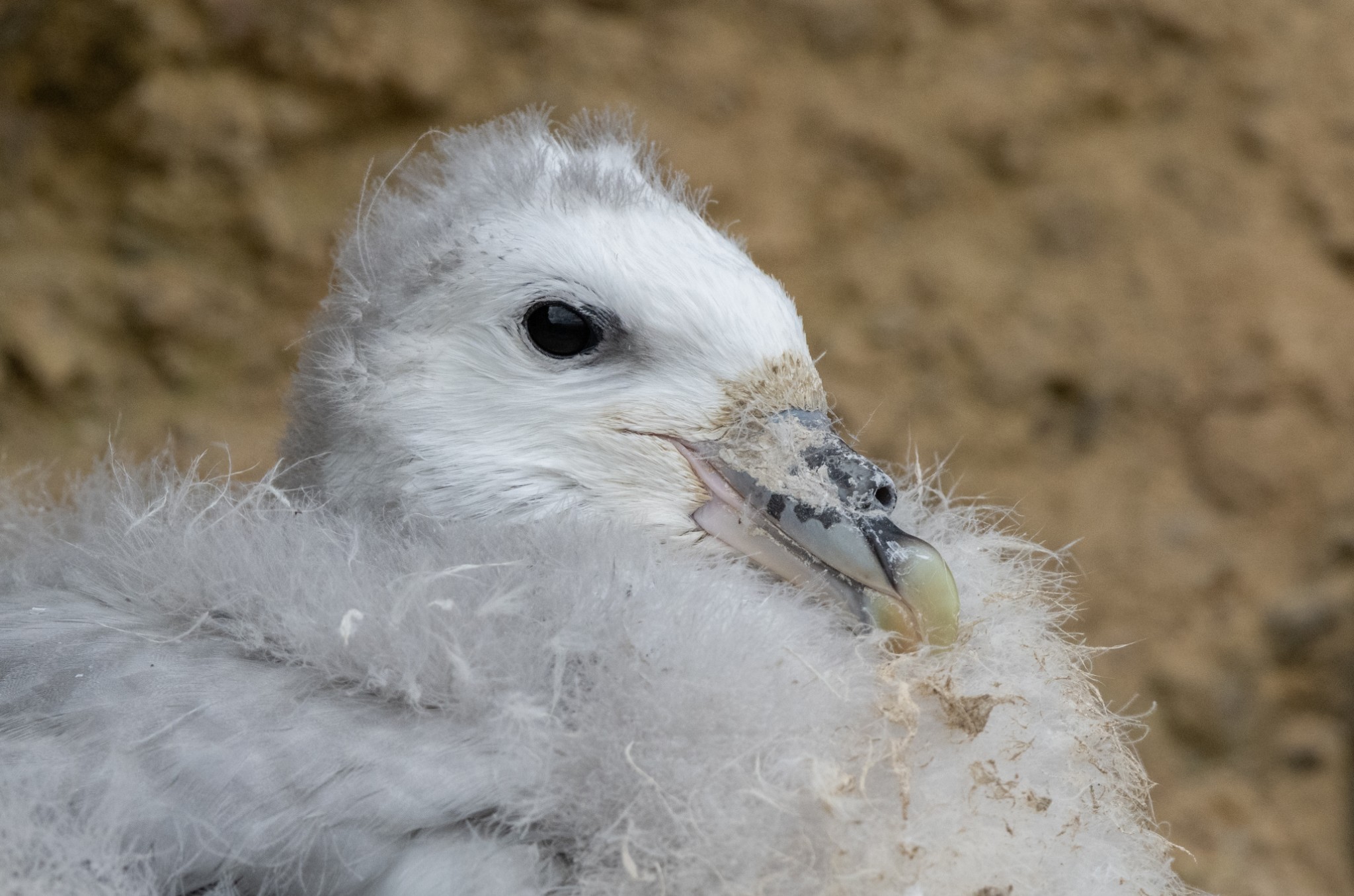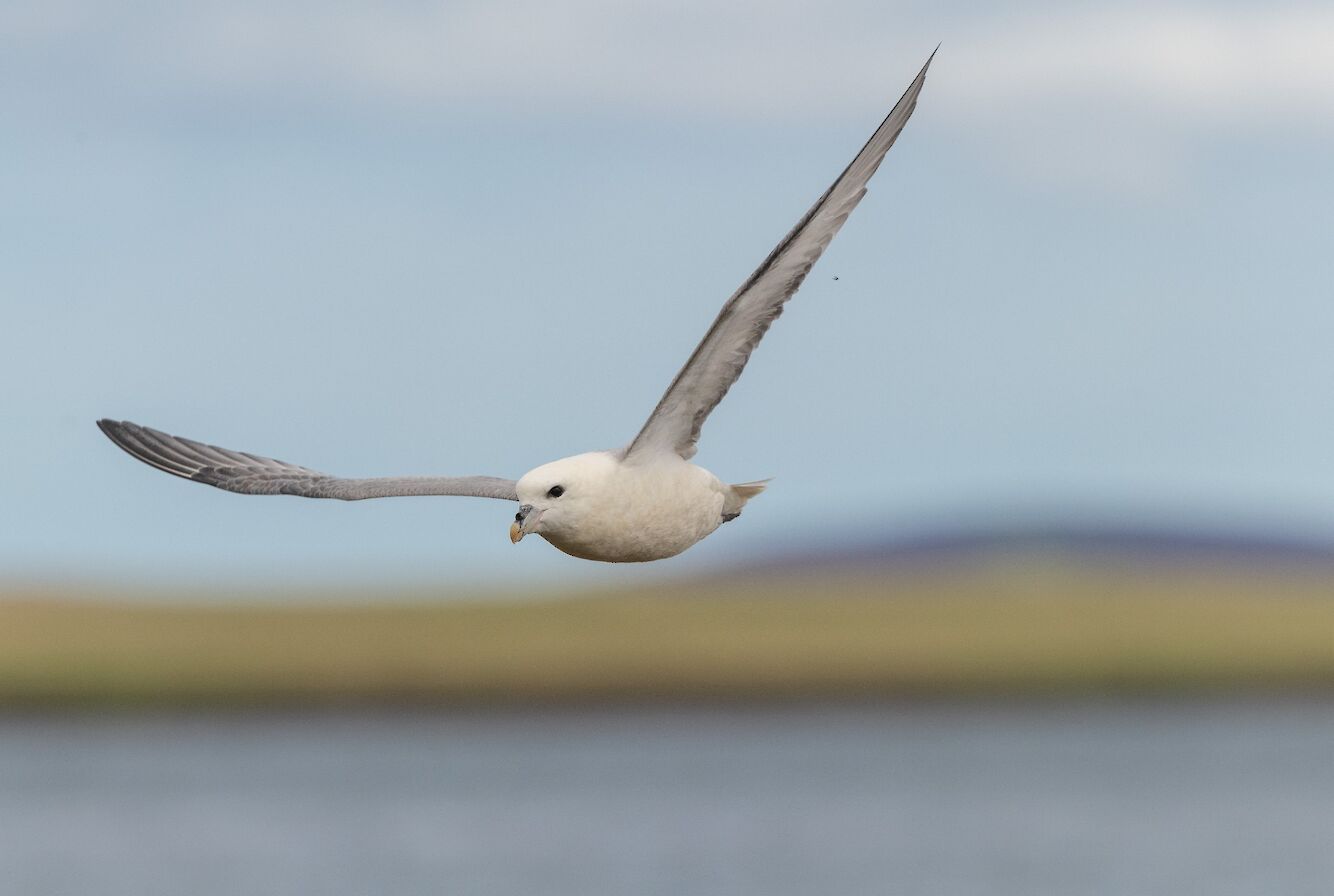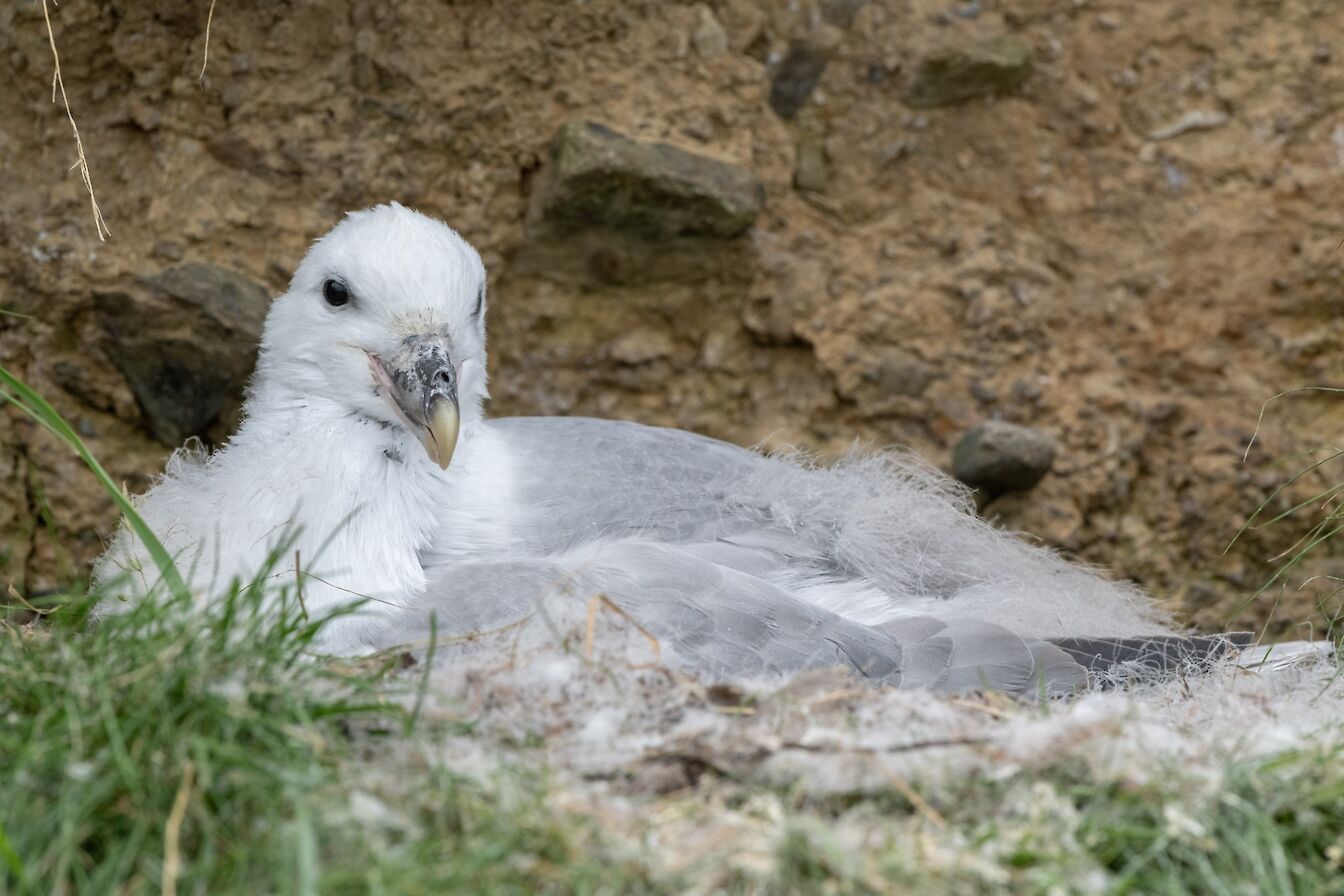I’ll admit that I find September a bit of a tricky month for wildlife watching in Orkney. This might be more to do with my mindset, with that ‘end of summer’ feeling, than an actual lack of wildlife.
For most birds the breeding season is well over and the seaweeds I see whilst diving are starting to look past their best, appearing faded and worn.
So, for this month’s article I’ve gone back to have a look at a favourite bird of mine that I’ve often fallen back on, the fulmar. Partly the reason for spending some time watching and photographing them was to raise my spirits. Visitors and residents not only to Orkney but to many coastal communities around Scotland can’t have failed to notice the number of dead seabirds on our beaches over the summer, the result of an unprecedented outbreak of a new highly infectious strain of avian flu.
The impact of avian flu on some of our seabirds, gannets and great skuas in particular, has been truly devastating. I spent a month filming in Shetland this summer and I could count the number of great skuas I saw on one hand.
This strain of bird flu is more transmissible than before and clearly seabird populations are at especially high risk in their densely packed breeding colonies. Many seabird species have tested positive, ranging from sandwich terns to guillemots, and from eider ducks to herring gulls.
What is happening in Scotland is of global significance. 56% of the world’s great skuas are found here, whilst Scotland is home to 20% of the world’s northern gannet population, including the world’s biggest colony on the Bass Rock. I fear for great skuas in particular - what is happening to them is worrying at a population level. We are used to seeing ‘bonxies’ all summer, cruising past us on the coast with their impressive barrel chest. I hope we don’t lose them altogether.
As I walked my dog along Dingieshowe beach recently I came across five dead gannets before seeing the heart-wrenching site of a dying gannet, barely able to lift its head before resting it between its wings again.
Fulmars haven’t entirely escaped; some having tested positive but as far as I’m aware to no great extent.
And so, I went to check on a local colony of mine to see how they have fared over the summer. The site is unspectacular, right next to a main road with some very low-lying cliffs. In fact, to even call them cliffs is to give them status they don’t deserve! Still, it’s a great place for photography and it’s possible to approach the birds quite closely as long as you’re careful and considerate.
You would think that a fairly large, bright white bird would be easy to spot, wouldn’t you? I know this site well and so know where to find the chicks, but sometimes I still get caught out with the vegetation at its thickest now. Getting caught out near a fulmar chick is the last thing you want to do - once startled they make quite a unique noise and if you’re particularly unlucky it will spit foul smelling gastric juices at you, once smelled never forgotten!
In fact, before I even reached the shore, the wind brought their musty scent my way. The other members of the petrel and shearwater families also have this particular odour and I must say I quite like it!
The first fulmars I see aren’t on the cliffs but a group gathered just offshore, swimming past the extensive seaweed beds exposed here at low tide. Wide gaped they cackle at each other before alighting. It’s in the air where the fulmar sets itself apart from our other seabirds. It’s a supreme flyer, using its stiff grey wings to roll and cruise effortlessly past, its curious nature can often mean ‘fly-bys’ at just a few metres away, often at head height.
Ostensibly the fulmar is coloured much like a gull with a white head and chest, and scalloped grey wings and back, but certainly in the air it is altogether different with a much more elegant flight. The same can’t be said when it lands. Its legs are set far back on its body so landing attempts even when successful often look ungainly.
For me, it’s the jet-black eye with charcoal eye shadow that sets it apart, giving it a soft gentle look. I did however see a much darker looking fulmar early in the year at Borwick near Yesnaby. It very much stood out as it had a beautiful dark grey appearance. These dark birds are often referred to as ‘blue fulmars’ given the smoky blue nature of their plumage.
Back to my low-lying cliffs and the large single white egg laid in the spring is now a large white chick. I say chick but really, I can see that these birds are almost ready to fledge. Some guano spattered ledges are already empty, their summer inhabitant no doubt gliding over the sea somewhere not too far away.
I laugh to myself as I see a slightly younger chick. It has the appearance of having been plonked in a grey feather boa and unfortunately is a real ‘ugly-duckling’. I love fulmars but when the chicks are at this stage, still changing from fluffball to proper juvenile plumage, they really are scruffy.
This is the youngest chick here; some already look like adults, but on closer inspection the feathers on their heads still appear quite rough, not the stunning soft white plumage of their elders and tinged slightly grey. What really gives them away though is the caked-on appearance of something sticking to their bills. This is the dried remnants of whatever it is their parents last fed them. There is no dainty presentation of whole fish like guillemots and razorbills provide for their young, oh no, the fulmar chick is treated to a regurgitated mass of whatever the adult has preyed upon. It could be fish, whale blubber, squid or zooplankton, or a combination of all of those. The chick begs for food and it’s as basic as it gets, open wide and regurgitated down the hatch by the adult.
Unfortunately for the chick it isn’t just food that is passed through. Fulmars are well known for consuming plastic and other human rubbish found floating on the surface of the sea, mistaking it for food and providing a plastic load for its chick before it’s even had a chance to head to sea for itself. I can’t help feel the joy in watching these birds feels tainted knowing what we have done to them.
The detritus on its beak will wash off once at sea and it’s then that it’ll put its ‘tubenose’ to good use. The apparatus you see sitting atop its bill, similar to those you see on storm petrels and the albatross is a marvel of nature, smelling food far out in the ocean. I count eight nearly fledged chicks in a roughly 100 metre section of shoreline, which is good going for this stretch.
Fulmars are long lived and can live past 30 years of age. Melancholic perhaps with the ending of summer but as I leave, I wonder how much change these fulmars will see in that time. I hope they still have an ocean where they can find enough food to not only survive but thrive, and can move freely past the inevitable offshore wind turbines that will occupy the troughs between the waves they glide through as we battle climate change.
The fulmar is nothing if not adaptable, it has proved that in the past. I hope that in 30 years’ time they will still occupy this ‘unspectacular’ bit of coast, that familiar musty smell lingering in the air as they swing past on those stiff grey wings.
Find out more about Raymond’s work via his official website. You can also find him on Facebook, Twitter and Instagram.
